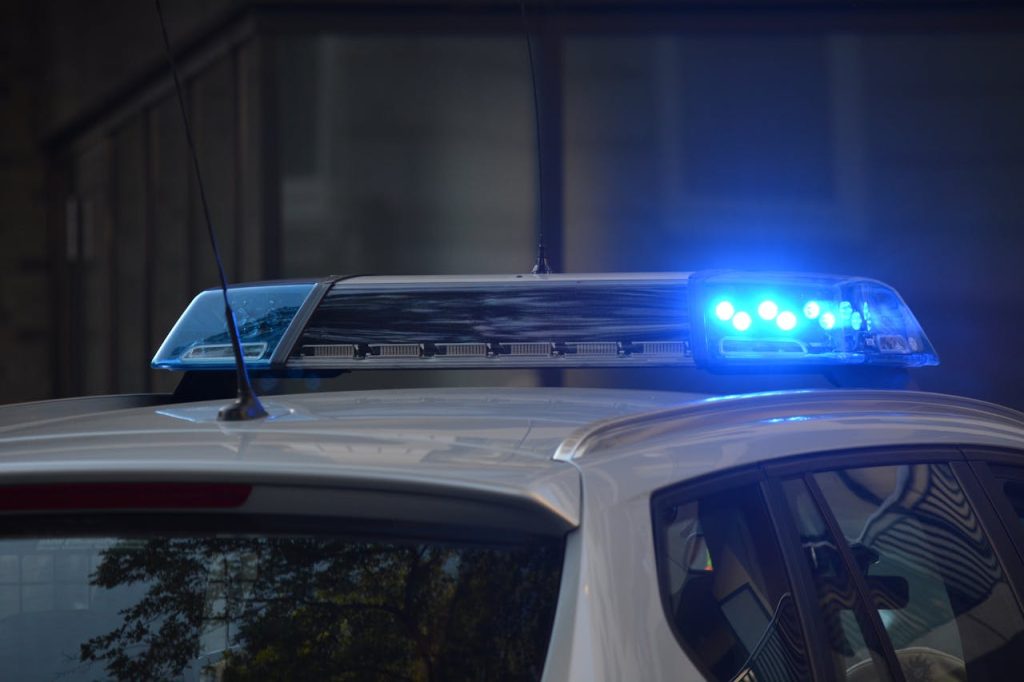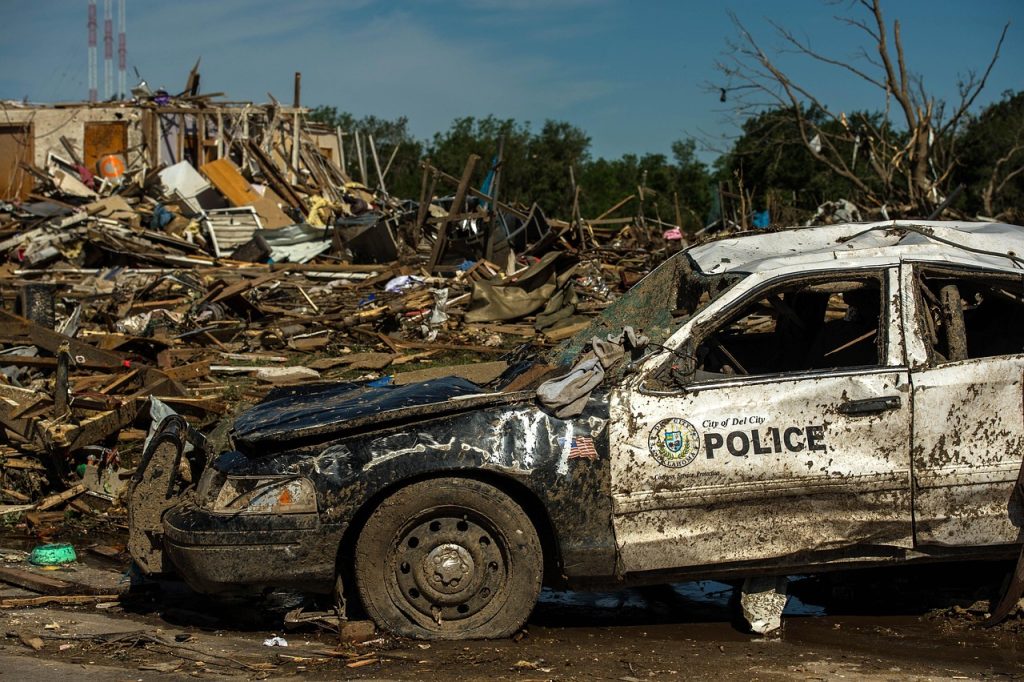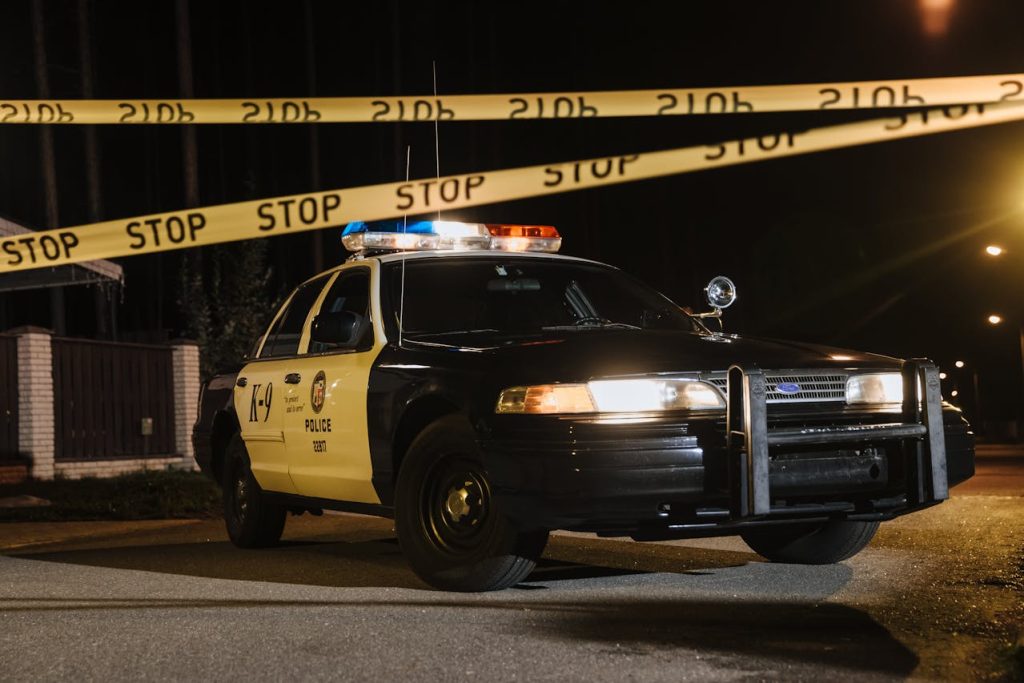If you ever wondered whether you can actually buy one of those retired police cars for personal or family needs, review the following guidelines. Police departments and law enforcement agencies sell thousands of vehicles across the country annually. At first sight, buying these former patrol cars might seem challenging. Nevertheless, it’s actually quite easy. In general, these officers’ cars often offer exceptional value for budget-conscious buyers.
Understanding the Different Types of Police Vehicles
What concerns law enforcement vehicles, their variety is rich. Police departments utilize different types of officer vehicles. This depends on specific needs, terrain, and jurisdiction. Each patrol vehicle helps officers protect and serve their communities.
- Ford Police Interceptor Utility: It’s based on the Ford Explorer SUV. This Ford is the most popular police car in recent decades. It’s equipped with specialized suspension and heavy-duty brakes.
- Dodge Charger Pursuit: A favorite among state police agencies. It features powerful engines and advanced protection systems.
- Ford F-150 Police Responder: The first pursuit-rated pickup truck. It’s perfect for police departments serving not in cities but in rural departments.
- Chevrolet Tahoe PPV (Police Pursuit Vehicle): A versatile SUV. It provides ample interior space for equipment and prisoners.
- Ford Police Interceptor Sedan (Former Crown Victoria): It’s no longer manufactured. However, this auto dominated the market for years. The primary reason is its high quality.
What Makes Police Vehicles Different from Civilian Models?

At first sight, police cars are similar to their civilian models. However, they’re much more extensively equipped and modified. This is made to meet law enforcement officers’ demanding requirements. These vehicles undergo significant upgrades. All the modifications are aimed at enhancing performance, durability, and safety. Here’s a detailed comparison between police and civilian models:
| Feature | Police Vehicle | Civilian Model |
| Engine | Heavy-duty cooling, high-output alternator | Standard cooling system |
| Brakes | Reinforced rotors, special brake pads | Standard brake components |
| Suspension | Enhanced springs, heavy-duty shocks | Regular suspension setup |
| Interior | Heavy-duty fabric, vinyl rear seats | Standard upholstery |
| Electrical | Upgraded system for police equipment | Basic electrical system |
| Transmission | Modified for pursuit capabilities | Standard transmission |
What Happens to Police Cars After Retirement?
Most of them are decommissioned after reaching specific mileage milestones. Police departments typically set these limits. Typically, these autos accumulate 75,000-100,000 miles. Once retired, police departments often send them to city or state auctions. The rest got to smaller police departments with tighter budgets.
Benefits of Buying an Old Police Car
Former cop vehicles can offer exceptional value for buyers who have sufficient buying power. These cars come with numerous upgrades and modifications. While not every retired police car will be a great option for every customer, they often provide unique advantages:
- Professional maintenance records and regular maintenance history, as agencies strictly follow maintenance schedules to achieve long hours of service.
- Heavy-duty components (enhanced cooling systems, robust alternators, and strengthened suspensions).
- Upgraded electrical systems.
- Better-performing brakes and transmission systems designed for intensive use.
- Significant cost savings compared to equivalent civilian models at auction.
Downsides of Buying an Old Police Car

When deciding to buy a retired cop car, consider the potential drawbacks. These vehicles have seen intense use. This typically leads to various issues:
- High idle hours can mean more engine wear than the odometer suggests.
- Interior damage from installed equipment and frequent use.
- Higher fuel consumption due to high-quality motors and heavy-duty modifications.
- Potential reliability concerns associated with maintenance history.
- Possible negative public perception of driving a former police vehicle.
Where to Buy a Retired Police Car
Government and Police Auctions
Government auctions serve as the primary marketplace for retired vehicles. They offer a one-stop shop for potential buyers. Such events feature vehicles from multiple agencies and departments. Competitive prices are among the primary benefits. Firstly, register beforehand to participate. Providing a deposit is another condition. Most auctions list their inventory online. This allows buyers to save money at auction by researching beforehand.
Used Car Dealerships Specializing in Police Vehicles
Many dealers in New York and other major cities sell retired law enforcement vehicles. These specialists suggest a more traditional car-buying experience distinctive from one-stop shops. They often carry out detailed inspections and necessary repairs, thus providing additional protection to customers.
Many of these dealers interact with police agencies across multiple cities and states. This ensures regular contact and a steady supply of well-maintained vehicles. Dealers may even provide warranties. Thus, buying a car at auction becomes easier.
Buying from Private Sellers
Private sellers occasionally sell vehicles through various online platforms. These sales usually offer lower prices. However, they require extra caution during the inspection process. Always request complete maintenance records. Utilize a VIN decoder to verify the vehicle’s history.
How to Inspect a Retired Police Car Before Purchase
Common Mechanical Issues to Watch For
When examining a retired vehicle, pay particular attention to certain components. The intense usage these vehicles typically experience is a central reason. Realizing these potential gaps can help you make an informed decision.
- Engine wear indicators:
- Excessive oil consumption and unusual engine noises.
- Transmission slipping or delayed engagement.
- Coolant leaks and overheating issues.
- Suspension components:
- Worn shock absorbers and bushings.
- Uneven tire wear patterns.
- Steering system play or noise.
- Electrical system problems:
- Battery charging issues.
- Malfunctioning accessories.
- Residual wiring from removed equipment.
Interior Wear and Hidden Flaws
The design of such vehicles often shows significant wear due to constant use and installed accessories. Look for torn upholstery. Check for holes in the dashboard. Examine the trunk area for water damage around former light bar mounts. Pay special attention to the center console area, as this is where most equipment was installed and removed. Check the windows for proper operation and any aftermarket tinting. Satisfied customers often report that thorough inspection at the beginning of the deal helps avoid future issues.
How to Decode the VIN for Vehicle History
Interpreting a police vehicle’s VIN can reveal vital information about its history and specs:
- Key VIN sections to check:
- Manufacturer and model year codes.
- Engine and transmission specifications.
- Original police package equipment.
- Production plant and build sequence.
- Special equipment codes:
- Police intercept package identifiers.
- Heavy-duty component options.
- Original police department specifications.
Customizing a Retired Police Car for Civilian Use
Turning a police car into one for civilian use involves more than just removing emergency lights and sirens; it may take a week or more. Many customers choose to install new design components and upgrade comfort features. The process typically includes several steps:
- Replacing damaged panels.
- Upgrading the audio system.
- Adding modern conveniences.
Some modifications, e.g., tinted windows or police-style spotlights, may require special permits as per your city/state laws.
Most Affordable Retired Police Cars

The market of retired police cars offers several cost-effective options. Realizing which models provide the best value can help get a reliable vehicle.
- Best value brands:
- Ford Crown Victoria Police Interceptor
- Dodge Charger Pursuit.
- Ford Police Interceptor Utility.
- Chevrolet Impala Police Package.
- Factors affecting affordability:
- Mileage and service history.
- Agency maintenance records.
- Auction location and timing.
Which Retired Police Cars to Avoid?
Not all retired police cars have the same characteristics. The Ford Crown Victoria models from 1998-2002 often experience transmission issues and rust problems. Similarly, early Dodge Charger Pursuit vehicles (2006-2010) tend to face electrical system failures. Some departments sell vehicles that have worked in harsh conditions. Therefore, double-check maintenance records carefully, especially when searching for the best used cars for families.
Summary
Getting a retired police car can be an excellent way to save money. Additionally, you’ll buy a vehicle built for durability and performance. They often come with upgraded components and detailed maintenance histories. It’s a good opportunity for budget-conscious customers. However, don’t forget to thoroughly examine such autos. Purchasing success largely depends on a thorough inspection and technical specs awareness.
Carefully consider factors like maintenance costs, fuel consumption, and intended use. While these vehicles can serve well for many years, they require knowledgeable ownership. Cooperating with reputable sellers and conducting thorough inspections will help ensure a satisfying experience and protection.
![]() FAQ
FAQ
Show more
How Many MPH Does a Police Car Go?
Most police vehicles reach speeds of 130-155 MPH. Among the fastest, the Ford Police Interceptor Utility and Dodge Charger Pursuit are typically highlighted. They are specially engineered for sustained emergency response capabilities. Additionally, they demonstrate long hours of service.
Are Fake Police Lights Illegal?
Installing and utilizing emergency vehicle lights on civilian vehicles is mainly illegal. This usually concerns blue and red lights. Any such combination makes your vehicle similar to an official law enforcement car.
Is It Illegal to Have a Police Sticker on Your Car?
Regulations about police-related vehicle markings vary by state, but generally:
Impersonating law enforcement vehicles is illegal nationwide.
Official police decals must be removed before civilian use.
Historical vehicle exceptions may apply in some areas.
Replica designs often violate state laws.
Can I Repaint a Retired Police Car Any Color?
You can repaint a retired police vehicle. However, there’s a strict condition. The new paint scheme mustn’t imitate active law enforcement vehicles. Remove all official markings and equipment before repainting.
Are Retired Police Cars Reliable for Long-Term Use?
The long-term reliability is related to some aspects:
Heavy-duty components built for extended service.
Parts availability remains good for common models.
Regular maintenance is essential.
Electrical systems may need updates.
Service costs match civilian vehicles.
Recommended Articles
:format(webp)/vulcan.abetter.bid%2Fwp-content%2Fuploads%2F2023%2F03%2Frawkkim-UsWvRFTssRs-unsplash.jpg)
How to Buy Cars at Auction: Buying Guide & Tips
:format(webp)/vulcan.abetter.bid%2Fwp-content%2Fuploads%2F2023%2F10%2Fgetty-images-sWy08yx4Bmo-unsplash.jpg)

:format(webp)/vulcan.abetter.bid%2Fwp-content%2Fuploads%2F2025%2F02%2Fscott-rodgerson-ffH_GkINfyY-unsplash.jpg)
:format(webp)/vulcan.abetter.bid%2Fwp-content%2Fuploads%2F2022%2F10%2F2022-10-05-11.30.40-150x150.jpg)
 FAQ
FAQ :format(webp)/vulcan.abetter.bid%2Fwp-content%2Fuploads%2F2024%2F02%2Fgetty-images-pvy2Xc8tmGQ-unsplash.jpg)
:format(webp)/vulcan.abetter.bid%2Fwp-content%2Fuploads%2F2025%2F12%2Fcopart-vs-manheim-cover-1.png)
:format(webp)/vulcan.abetter.bid%2Fwp-content%2Fuploads%2F2025%2F11%2Fautobidmaster-vs-copart-1.png)
:format(webp)/vulcan.abetter.bid%2Fwp-content%2Fuploads%2F2025%2F11%2Fa-better-bid-vs-autobidmaster.png)

